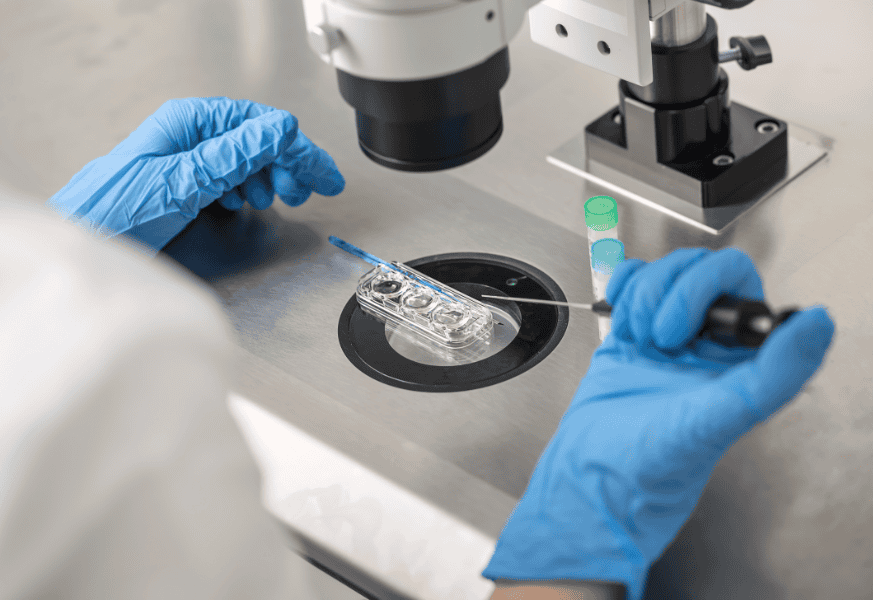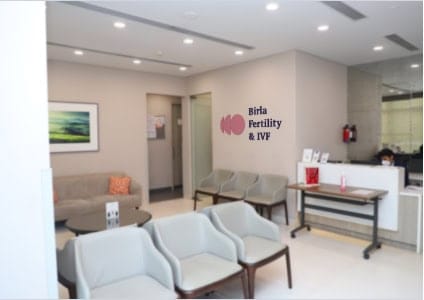

We believe in quality treatment to offer a high success rate
All-inclusive personalised IVF-ICSI treatments from top class renowned fertility specialists
Book an AppointmentSuccess Rate
In Vitro Fertilisation or IVF is one of the most effective fertility treatments for couples trying to conceive but are unable to on their own. The treatment is rather complex and involves several procedures, medications, and investigations. Considering the physical, psychological, and financial burden of IVF, it is understandable for patients to want to know the likelihood that the treatment would help them conceive and have a healthy baby.
The success rate of IVF is possibly the most significant deciding factor while choosing your fertility clinic aside from the cost of treatment. While patients must certainly factor in “success rate” into their decision, it may not be as simple as just comparing the clinics based on their numbers.

Understanding IVF Success Rate
When interpreting success rate to compare figures and clinics, one of the most important aspects is to understand which success rate is being reported. Success rate for IVF can be either their pregnancy rate or live birth rate.
The World Health Organisation defines pregnancy rate as “the number of clinical pregnancies (confirmed by ultrasound or HCG test) expressed per 100 initiated cycles, aspiration cycles or embryo transfer cycles” and live birth rate is defined as “the number of deliveries that resulted in at least one live-born baby expressed per 100 initiated cycles, aspiration cycles or embryo transfer cycles”. It is not necessary that all pregnancies resulting from IVF treatment progress as desired. For this reason, the live birth rate is considered to be a more accurate measure of IVF success rate.
Types of IVF Success Rate
Live Births Per Started Treatment Cycle
This figure is defined as the percentage of live births from a fresh embryo transfer in one treatment cycle. However, this measure does not consider babies born from frozen embryo transfers.
Pregnancies Per Embryo Transfer
This figure is the percentage of the number of clinical pregnancies resulting from a single embryo transfer. It does not count women who did not respond to ovulation induction and includes women who may later miscarry.
Live Births Per Embryo Transfer
This figure is the percentage of women who deliver one or more healthy babies following an embryo transfer. Multiple births such as twins are also considered a single birth for this measure.
IVF Success Factors
Considering the complex nature of IVF treatment and the procedures involved, there is a myriad of factors which impact treatment outcomes. In fact, the clinic’s success rate may or may not apply to you as an individual. The best way to get a good idea of your own potential IVF success rate is to consult a fertility specialist and consider all the factors unique to you and your partner. Some of the factors which impact IVF success rate include:
Previous Pregnancy
If you and your partner have had a successful pregnancy before, you may have a better chance of a successful pregnancy with IVF. History of miscarriages or fertility problems with a new partner can lower the possibility of a live birth from IVF.
Age
IVF success rates are known to decline as the female partner grows older. Chances of success are highest between the ages of 24 years to 34 years. It is important to remember that although success rate drop with age, treatment outcomes also vary based on the female partner’s reproductive health and medical history.
Cause of Infertility
Certain conditions such as fibroid tumours, uterine abnormalities, presence of male and female infertility factors and ovarian dysfunction can make a success with IVF less likely but not impossible.
Quality of Egg and Embryo
Factors like maternal age, ovarian reserve, stimulation protocol and sperm quality can impact the quality of eggs and embryos. The success rate of IVF treatment is greater for higher quality eggs and embryos.
Number of Embryos Transferred
Multiple embryos may be transferred into the uterus to increase implantation rate. However, this also increases the risk of high order pregnancies like triplets.
Sperm Quality
Male factor infertility can affect embryos however, advances in the field of ART has helped detect and mitigate these issues.
Donor Eggs
Donor eggs can be used in an IVF cycle to improve treatment outcomes for patients whose quality of eggs are compromised due to factors like age, medical treatments and underlying conditions.
Controlled Ovarian Stimulation Protocol
These protocols define the type, dosage and schedule of fertility medications administered to stimulate ovulation. Accuracy in timing and dosage as well as individualisation based on the patient’s reproductive health is essential in determining which protocol will be most favourable for the patient.
Embryo Transfer
Embryo transfer is one of the most critical steps in the entire process of IVF treatments. Any issues in the transfer process like incorrect timing as well as unexpected biological factors can negatively impact successful implantation of the embryo in the uterus.
Uterine Receptivity
The uterine environment is essential for the healthy development of the embryo inside the uterus. Factors like the thickness of the uterine lining, immunological factors as well as the uterine shape can affect receptivity.
Lifestyle
For women undergoing IVF treatment, it is recommended that they stop smoking and drinking alcohol at least three months prior to starting the treatment. Smoking dramatically reduces the chance of successful implantation. Maintaining healthy body weight is also helpful in carrying the pregnancy to term.

Our IVF Success Rate
At Birla Fertility & IVF, we are committed to helping our patients realise their dream of parenthood with clinically reliable and world-class fertility treatments. We provide personalised care for each of our patients through one-on-one unhurried consultations. Our labs are equipped with the latest technology in the field of fertility medicine and ART to maintain an internal standard in embryology.
In some situations, two or three-cycle IVF treatment may be also recommended as multiple IVF cycles are also known to increase chances of conception significantly. Our team recommends multi-cycle IVF packages to couples who are less likely to conceive with one IVF cycle. Aside from this, we also offer all complementary treatments like blastocyst culture to improve treatment outcomes.















